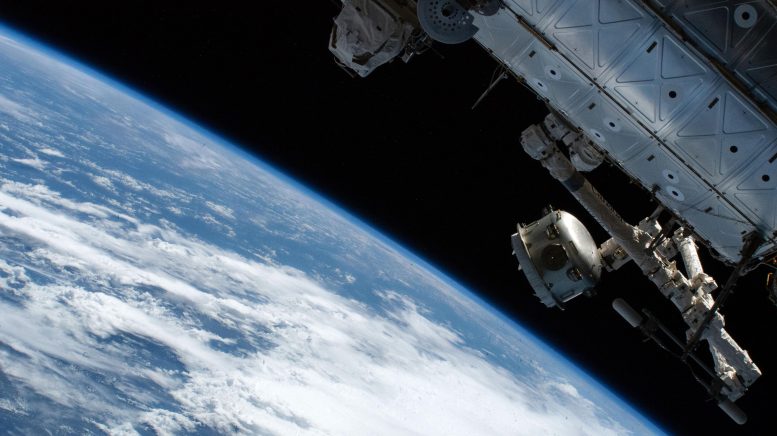
The Nanoracks Bishop Airlock is pictured in the grips of the Canadarm2 robotic arm as it is positioned away from the International Space Station. The commercial platform was being maneuvered prior to jettisoning a trash container for a fiery, but safe disposal above Earth’s atmosphere. Bishop is a multi-faceted airlock attached to the Tranquility module used not only to discard trash, but also to host research payloads, deploy satellites, and serve as a testbed for a variety of space technologies. At the right, the Canadarm2 is attached to the U.S. Destiny laboratory module as ground controllers remotely maneuver the robotic arm. Credit: NASA Johnson
While continuing to host an array of advanced science experiments, the International Space Station (ISS) is also busy with spacewalk preparations. The seven-member Expedition 67 crew also ensured the ongoing operation of research gear and electronics equipment while auditing station office supplies.
In microgravity, the lack of an up and down reference may affect the human nervous system, which could potentially impact how crew members interact with spacecraft instrumentation. NASA Flight Engineers Bob Hines and Jessica Watkins studied how weightlessness influences an astronaut’s ability to grip and manipulate objects with continued work on the GRIP experiment in the Columbus laboratory module on Thursday. Hines and Watkins took turns conducting the investigation while lying flat on their backs as scientists monitored from the ground. The pair of astronauts had performed research operations from a seated position earlier in the week.
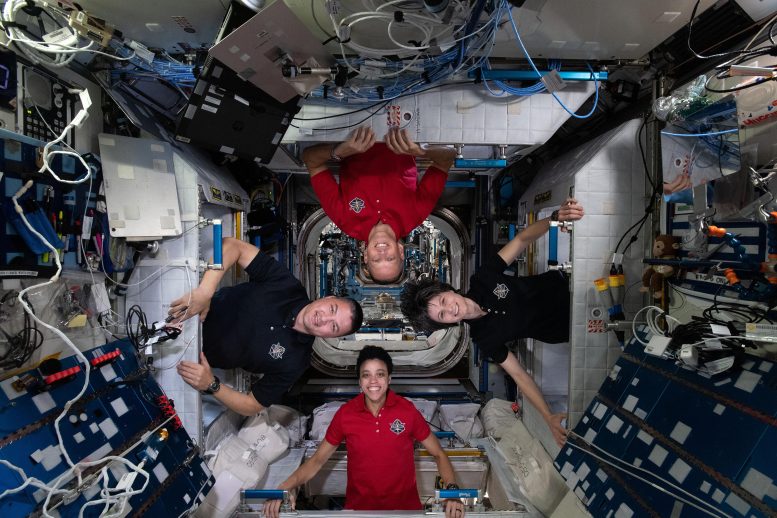
Expedition 67 Flight Engineers (clockwise from bottom) Jessica Watkins, Kjell Lindgren, and Bob Hines, all from NASA, and Samantha Cristoforetti of ESA (European Space Agency), pose for a fun portrait inside their individual crew quarters aboard the International Space Station. Credit: NASA Johnson
Jessica Watkins then spent the rest of the day working on electronics gear and connections inside the Harmony module. Bob Hines swapped air supply hoses ensuring the proper airflow inside the Quest airlock.
NASA Flight Engineer Kjell Lindgren started his morning in the Kibo laboratory module servicing a specialized microscope that uses spatial filtering techniques to observe cellular and tissue structures. Afterward, he moved on to a space manufacturing study observing a run of the Intelligent Glass Optics study that incorporates artificial intelligence into its methodology.
Two veteran station crew members, ESA (European Space Agency) Flight Engineer Samantha Cristoforetti and Roscosmos Commander Oleg Artemyev, resumed their preparations today for an upcoming spacewalk. The duo from Italy and Russia will exit the station Poisk airlock at 10 a.m. on June 21 and spend approximately seven hours continuing to outfit the European robotic arm attached to the Nauka multipurpose laboratory module.
Cosmonaut and Flight Engineer Denis Matveev inventoried station supplies, including printing paper, ink cartridges, and batteries, throughout the station’s Russian segment. Roscosmos Flight Engineer Sergey Korsakov configured nanosatellites that will be deployed during the upcoming July 21 spacewalk.




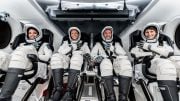
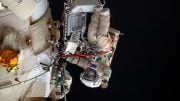
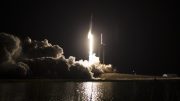
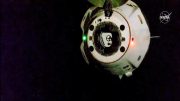
Be the first to comment on "Nervous System Study and Spacewalk Preps Continue on International Space Station"